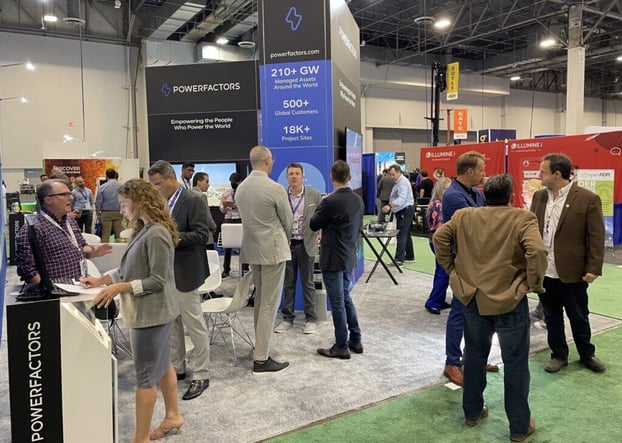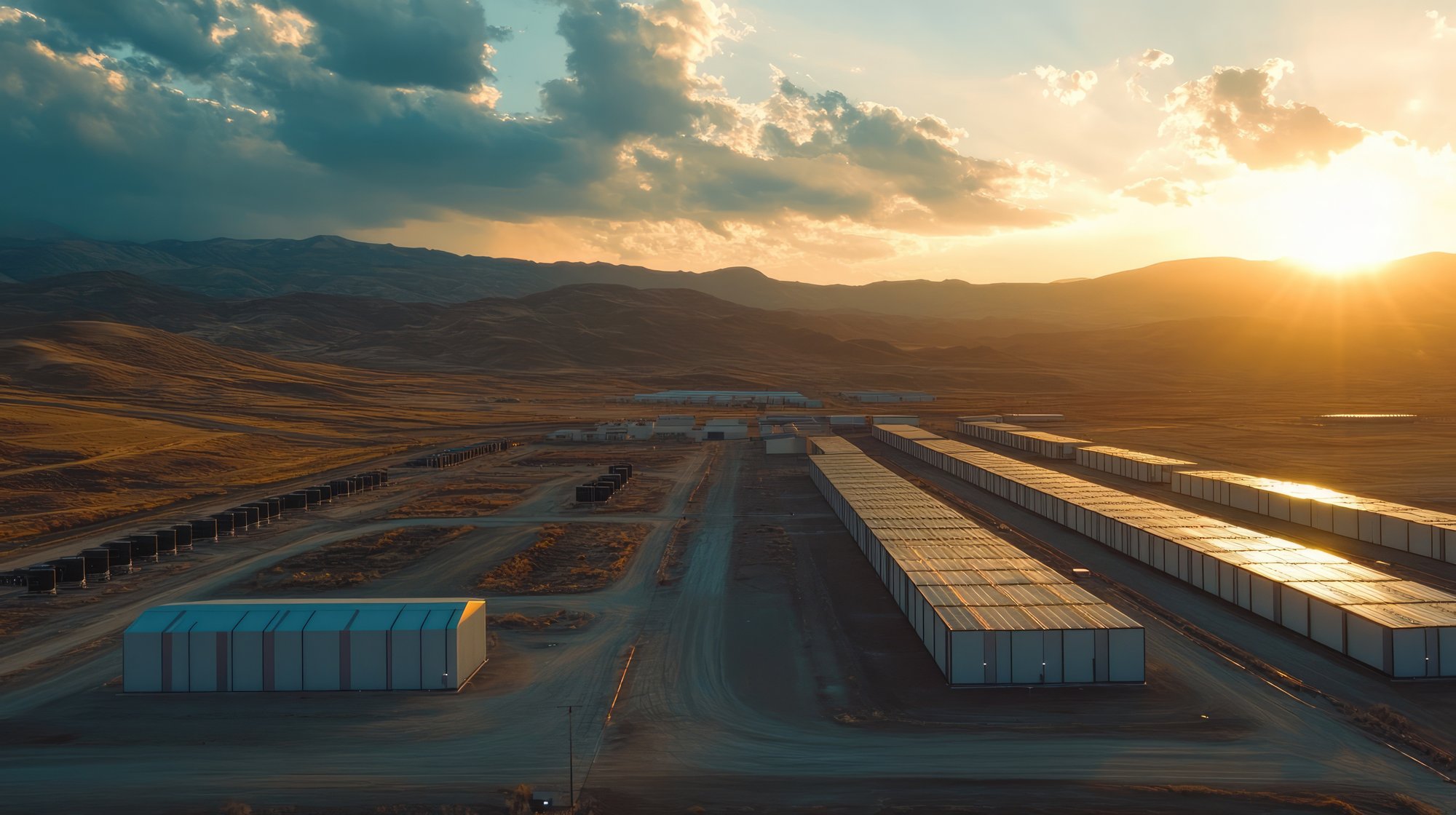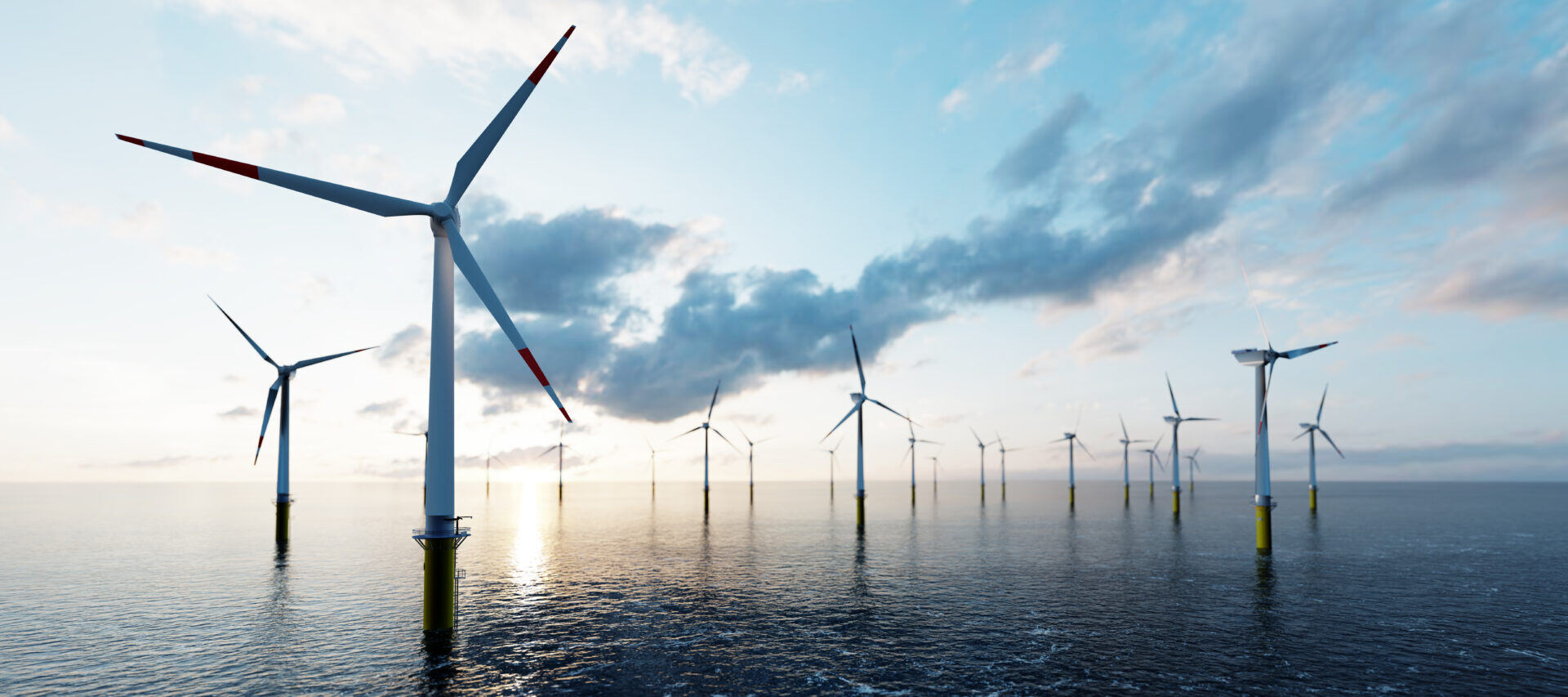FIVE KEY TAKEAWAYS FROM RE+ 2023
Will Troppe, Director of Product at Power Factors, shares five key takeaways from RE+ 2023 in Las Vegas, Nevada.

Stay in touch
Subscribe to our newsletter for expert insights, company updates, and the latest in renewable energy management solutions.
Will Troppe, Director of Product at Power Factors, shares insights from RE+ 2023 in Las Vegas, NV.
Las Vegas was designed to deceive. Shiny lights distract. Hallways are mazes. What, on a map, looks as simple as crossing an intersection takes twenty minutes by foot. The interior of the RE+ conference was similarly disorienting, with a dizzying array of booths, but where Las Vegas obscured, RE+ illuminated. My interactions at RE+ shined a light on the true state of our industry and the diverse ecosystem that powers it.
Unlike Las Vegas, the solar industry doesn’t depend on luck. Rather, we need concerted, continued investment in deploying technology as quickly as possible, and policies that encourage this deployment.
A year ago, the Inflation Reduction Act (IRA) delivered just that, spurring a US clean energy boom. The IRA, originally projected to deliver $370B in public funding over the next decade, has met unprecedented demand; Goldman Sachs increased their estimate to over $1T earlier this year. After declaring victory, policy wonks have rapidly shifted their attention to the next-largest deployment bottlenecks of permitting and interconnection process reform.
Meanwhile, continued growth brings real-world physical and operational challenges, and over 40,000 attendees arrived ready to learn about – and address – them. Here are my top five takeaways from the event:
- Sustainable Growth Requires Innovative, Scalable Technology
- Beyond Buzzwords: AI for Renewables Must Be Done Right
- Owners Are Pushing to Liberate Their Data
- Industry Growth Continues to Power a Diverse, Changing Vendor Ecosystem
- A Clean Energy Future Includes Everyone
Let’s explore them in more detail below.
1. SUSTAINABLE GROWTH REQUIRES INNOVATIVE, SCALABLE TECHNOLOGY
Developing new clean energy projects is not enough. We need these projects to produce as much clean energy as possible for their entire financial lives – and ideally, beyond. Growth at the scale we need brings scale challenges. As clean energy operations businesses scale, they hire people. The IRA has already created 170,000 new jobs and counting. Growing companies also “hire” software to help those people work more efficiently.
But there simply aren’t enough qualified workers in our economy today to perform the clean energy work that’s coming. This means three things.
First, we need to increase the pool of qualified workers. Training programs help, as do the IRA’s apprenticeship and prevailing wage provisions that unlock additional incentives for investors while providing on-the-job training and fair wages to our future workforce. Vendors promising to supply qualified apprentice workers and software to track work performance requirements have sprung up to meet this demand and were on the floor at RE+.
Second, we need software that lowers the level of human expertise required to do great work and make quality operational decisions, while enabling workers to do more with less. Like an exoskeleton, software should enable smart people to do great work – even if those smart people haven’t worked in the clean energy industry before. Let’s reduce the barrier to entry for workers who are compelled to join our clean energy workforce and use all the tools at our disposal (including AI) to automate routine work so humans can focus on the challenges truly deserving of a human brain.
Third, software built on megawatt-scale data foundations crumbles when facing gigawatt-scale portfolios. Seek software partners with gigawatt-scale experience.

2. BEYOND BUZZWORDS: AI FOR RENEWABLES MUST BE DONE RIGHT
For years, AI has been a buzzword in the asset performance management (APM) space. The road is littered with companies that have oversold their expertise in AI and its relevance in our industry. Some of these companies had the right idea but were too early. AI technology and our corner of the energy industry just weren’t ready. For a long time, an industry that still used “digitalization” as a contemporary term tried to simultaneously adopt AI; the results were predictably dismal.
Recent advances in AI mean that it can do more than it could before — it can solve more problems in our industry and is the right tool for more jobs than before. But, like a hammer, AI is a tool. To a hammer, every problem looks like a nail. It is foolish and fatal to apply a tool incorrectly or where a different tool would be wiser. Our market wants to partner with vendors who have a proven track record of applying AI right.
Shameless plug: Power Factors’ 200+GW dataset of cleaned operational renewables data is AI-powered and AI-ready, and the Unity platform we announced the week before RE+ is ready to serve as our customers’ single, modular hub, their springboard for innovation as they scale. AI models are data-hungry; you’ll want to work with companies ready to feed them.
A conference session on AI for the Energy Transition uncovered several key insights into applying AI within our space. Panelists recommended AI as the right tool in instances where physical models are insufficient – either because they’re too slow (real-time energy trading algorithms can’t rely on simulations that take hours to run) or include too many dimensions to adequately model.
Finally, how humans expect to use software is changing. The human-machine interface (HMI) of the past, replaced last decade with dashboards, is now evolving again. Business users and executives expect to be able to ask software a question using plain text and receive a correct, high-confidence response, without having to interpret a graph or summon an analyst. For example, a user might ask, “How much revenue did I make last month? Am I trending up or down? Why? What should I do about it?” Users will rely on graphs and dashboards to validate AI insights as they build trust and confidence in the automated algorithms.

3. OWNERS ARE PUSHING TO LIBERATE THEIR DATA
As our industry evolves, sites stay the same, but owners, operators, and service providers may change. Projects are sold, and contracts are renegotiated. Vertically integrated manufacturers/owners/operators sell their services divisions, no longer justifying higher-quality O&M work through increases in module sales. Meanwhile, owners look to strategically bring operations in-house in regions with a high concentration of need. Owners seek better and more real-time information. They want to oversee their assets like they own them.
Sites deserve a single history of system-of-record operating data for their entire lifetime. Site health is best delivered if all stakeholders share access to the same high-quality, cleaned datasets and insights. A shared understanding of “truth” should power investment and operational decisions. Service providers should differentiate through services and scope, not through data gatekeeping.
One asset in the field should align with one “digital twin” in the cloud that aligns all key stakeholders around “truth” for a single asset. Software should empower these stakeholders to best serve the site through collaboration tools and, by extension, power the growth of our industry and our combined ability to combat climate change.
4. INDUSTRY GROWTH CONTINUES TO POWER A DIVERSE, CHANGING VENDOR ECOSYSTEM
Where there is need, there are vendors. Where there are vendors, there are investors. Where there are investors, there are startups and M&A. A few headlines caught my attention surrounding the conference. Zeitview acquired Heliolytics from NovaSource to become the largest aerial inspection vendor in solar. Meanwhile, solar module recycling (which I wrote about last year) is bringing the lifecycle full circle, and Solarcycle is gaining traction: Greenbacker signed an exclusive agreement to recycle their modules with the start-up.
A confluence of factors is creating new energy in the clean tech VC and startup space; Gen Z is increasingly seeking impact-oriented work, Big Tech has lost its shine for many over the last several years, and clean tech tailwinds make investment in the sector more attractive than ever before. (Throw in AI too for some extra spice.) Smart people want to do good, meaningful work, and opportunities abound.
One of my favorite conversations of the week was with the founders of Fliteworks, self-described “robotics nerds” and recent college graduates. They brought refreshing energy and passion as they described their “drone-in-a-box” concept for remote exception-based visual and thermal scans to help with issue identification and investigation. Their hunger for impact was galvanizing and invigorating.

5. A CLEAN ENERGY FUTURE INCLUDES EVERYONE
RE+’s opening session celebrated more than a decade of climate activism that culminated in the IRA, reinforcing the connection between our industry and the policies that guide it.
One of the featured speakers, CNN host and former Obama appointee Van Jones, emphasized the importance of environmental justice. The IRA encourages investment in historically disadvantaged communities, but, he said, we need to do more, for moral reasons and beyond.
We are pushing for big changes. Van Jones was clear: “You’re running a transformation of the global system. You cannot afford to leave people out. There are no throwaway neighborhoods.” He cautioned: If our industry does not actively engage and benefit marginalized groups, we are vulnerable to a backlash alliance between them and polluters with powerful incentives to stall growth. Entrenched interests could attempt to weaponize marginalized groups with manufactured attacks designed to divide and distract us from the goal of clean energy for all.
Van said it best, so I’ll close with his words to us that night: “Don’t forget about why we do what we do. We want to generate more clean energy. Let’s get to work.”
Will Troppe is Director of Product at Power Factors. Follow him on LinkedIn!


-2.jpeg?width=2000&name=AdobeStock_785443953%20(1)-2.jpeg)


